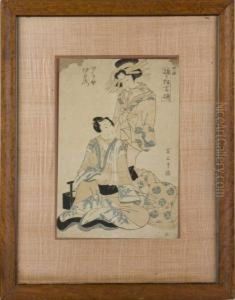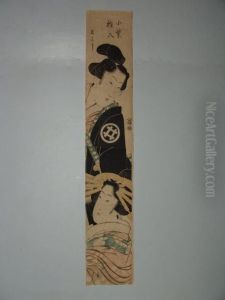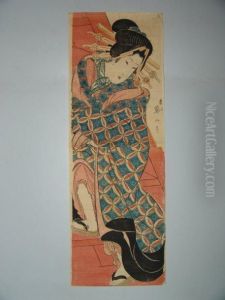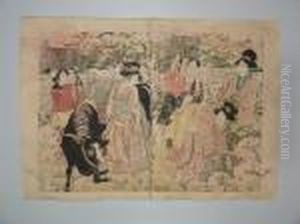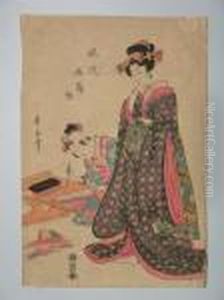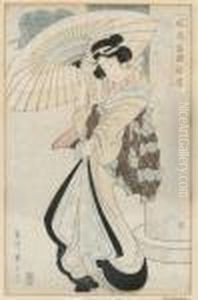Eizan Paintings
Kikugawa Eizan was a Japanese ukiyo-e artist who lived during the late Edo period. He was born in 1787 in Edo (present-day Tokyo), Japan. Eizan was known for his bijinga (pictures of beautiful women) prints and is considered one of the last great masters of this genre. He was a student of the renowned artist Kikukawa Eisho and later developed his own distinctive style, which was influenced by his contemporaries such as Utamaro and Eishi.
Eizan's career spanned a period of transition in the ukiyo-e world, as the genre was beginning to decline with the rise of Western influence in Japan. Despite this, he managed to achieve a reasonable degree of success and recognition during his lifetime. His works are characterized by their elegant portrayal of women from various walks of life, often depicted in fashionable clothing of the period and in poses that reflected the leisure and lifestyles of Edo's urban culture.
While he initially produced prints that were similar to those of his teacher Eisho, Eizan's style evolved, showing greater emphasis on softer lines and more vibrant use of color. Unlike some of his predecessors, Eizan also incorporated elements of landscape and nature into his bijinga, creating a more dynamic and detailed backdrop for his figures.
In the 1830s, Eizan's focus shifted away from single-sheet prints to illustrated books and surimono (privately commissioned prints), which were less affected by the government censorship and restrictions of the time. His later works lack the polish and innovation of his earlier pieces, possibly due to the changing tastes and economic difficulties experienced during this period.
Eizan's influence declined towards the end of his career, overshadowed by the upcoming artists of the late Edo period, such as Utagawa Kunisada and Utagawa Kuniyoshi, who were adapting to the changing times with new styles and subjects. Eizan passed away in 1867, leaving behind a legacy that, while not as prominent as some of his peers', remains an important part of the ukiyo-e tradition and provides a valuable insight into the aesthetics and culture of late Edo period Japan.
